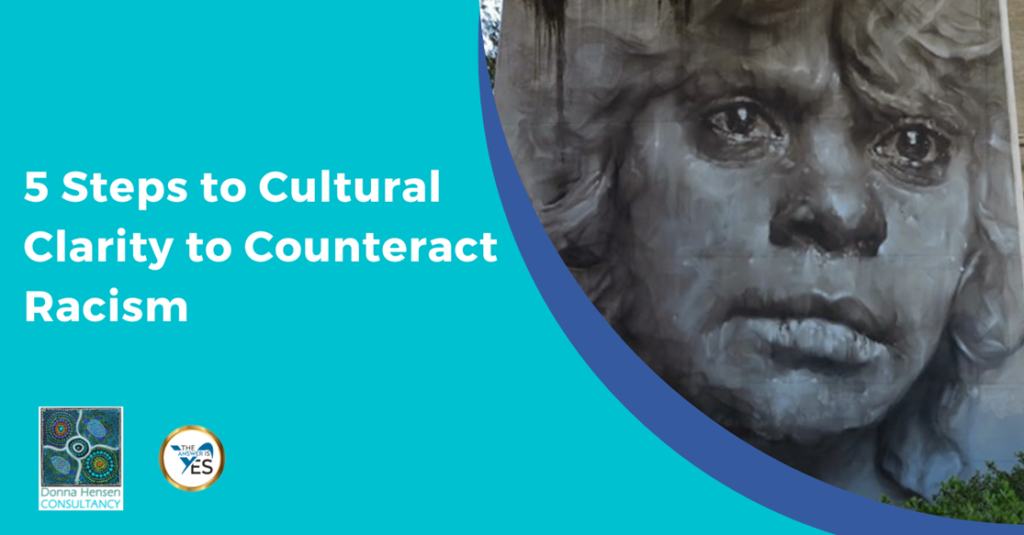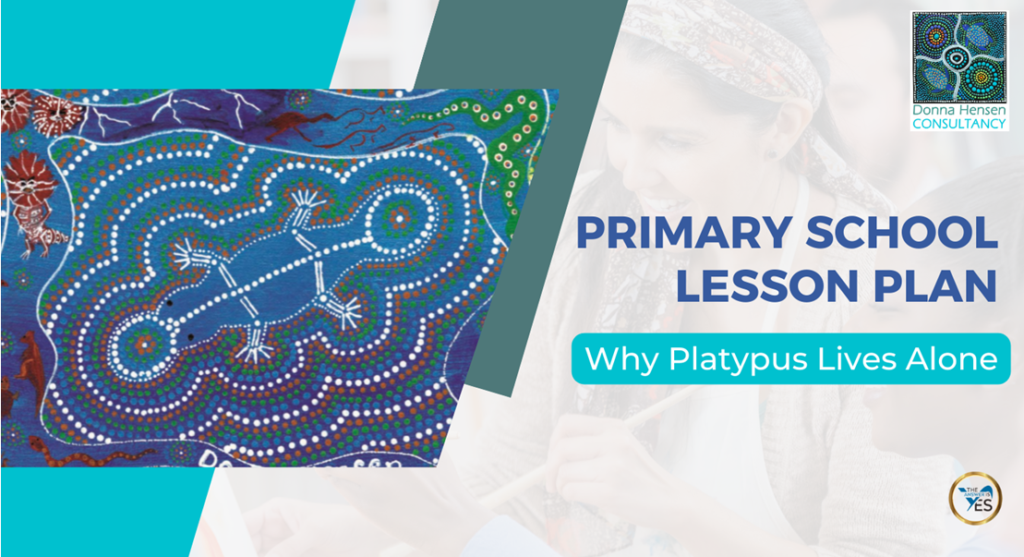Online Cultural Training is aimed at those businesses that have Aboriginal Staff or Aboriginal Clients.
How to finally get Cultural Clarity in 5 easy steps, without guilt, blame or anger.
Aboriginal Cultural Awareness 60,000 years condensed to a general induction program.
The 5 Steps to Cultural Clarity course explains how Indigenous people are different and require something a bit different from you and your team.
The Cultural Clarity you gain from this course will:
- help you make changes that improve your outcomes
- nail your strategic planning
- risk management.
- be able meet the needs of your organisation staff and clients.
- be able to lead your team with confidence and build “street cred” with the broader community”.
My training named 5 Steps to Cultural Clarity to Counteract Racism explains how Indigenous people are different and require something a bit different from you and your team. This Cultural Clarity will help you make changes that improve your outcomes. You will nail your strategic planning and risk management. You will be able meet the needs of your organisation staff and clients. You will be able to lead your team with confidence and build “street cred” with the broader community”.
Teachers have students for most of the students waking hours. This makes them key people of influence. In these sensitive times, there are few things as important as healthy, positive, and modern teaching practices and methodologies.
Students under the age of 12 are like clay—they are highly impressionable and in the process of building a mindset that will carry them for the rest of their lives.
Every student’s day-to-day learning needs are different from everyone else. While adapting to this has become one of the key practices of modern education, there is a need for specialised training for teachers dealing with students that come from communities with ongoing intergenerational trauma.
Why should we normalise Aboriginal Culture within the school environment? Aboriginal students are Aboriginal every day of the year, not just at NAIDOC time. They have to deal with racism, discrimination, and negative stereotype every day, for the rest of their lives…..Unless we do something about it.
Well, what can we do to change things?
Replace ignorance with understanding. We need to normalise Aboriginal Culture and build personal connections to it for all students, their families, and all teachers. Aboriginal Culture is the longest-ongoing culture in the world. We should be proud and curious about it.
Why should we normalise Aboriginal Culture within the school environment? Aboriginal students are Aboriginal every day of the year, not just at NAIDOC time. They have to deal with racism, discrimination, and negative stereotype every day, for the rest of their lives…..Unless we do something about it.
Well, what can we do to change things?
Replace ignorance with understanding. We need to normalise Aboriginal Culture and build personal connections to it for all students, their families, and all teachers. Aboriginal Culture is the longest-ongoing culture in the world. We should be proud and curious about it.
Why should we normalise Aboriginal Culture within the school environment? Aboriginal students are Aboriginal every day of the year, not just at NAIDOC time. They have to deal with racism, discrimination, and negative stereotype every day, for the rest of their lives…..Unless we do something about it.
Well, what can we do to change things?
Replace ignorance with understanding. We need to normalise Aboriginal Culture and build personal connections to it for all students, their families, and all teachers. Aboriginal Culture is the longest-ongoing culture in the world. We should be proud and curious about it.

Improving Schooling for Future Generations
Teachers have students for most of the students waking hours. This makes them key people of influence. In these sensitive times, there are few things as important as healthy, positive, and modern teaching practices and methodologies.
Students under the age of 12 are like clay—they are highly impressionable and in the process of building a mindset that will carry them for the rest of their lives.
Every student’s day-to-day learning needs are different from everyone else. While adapting to this has become one of the key practices of modern education, there is a need for specialised training for teachers dealing with students that come from communities with ongoing intergenerational trauma.
When it comes to Aboriginal students, the need for a modern style that takes into account cultural learning needs, is the absolutely best practice of education.
Intergenerational Trauma can manifest in many ways
This kind of trauma has been passed down through generations and it manifests differently in every student. Identifying these manifestations and helping students cope with them and move forward into a loving community is something that needs to be learned. It is a process that includes behavioural science, psychology, and methodologies for relief and inclusion.
Inclusion needs to be communicated in a healthy way
Institutional integrity is one of the five dimensions of reconciliation. Incorporating reconciliation within the classroom is not onerous with the right training. In order to significantly reduce the impact of intergenerational trauma for the next generations, educations must learn how to incorporate inclusion so that every child feels that they belong.
This is a skill that teachers need to instill in their students as well, in order for them to be positive, warm, and inclusive for all students.
It is time for educators to educate themselves and teach using an improved method of reconciliation and inclusion for Indigenous and Non-Indigenous students. This is how we improve things for future generations.






